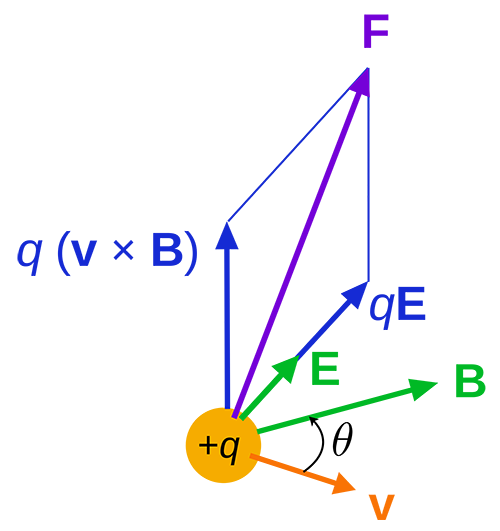Lorentz Force: Difference between revisions
No edit summary |
No edit summary |
||
| Line 11: | Line 11: | ||
[[File:Lorentz Force.png]] | [[File:Lorentz Force.png]] | ||
[[http://jnaudin.free.fr/lifters/lorentz/lorentz2.gif]] | |||
==Examples== | ==Examples== | ||
Revision as of 01:24, 5 December 2015
Claimed by Firas Sheikh--Fsheikh6 (talk) 21:09, 1 November 2015 (EST)
The Main Idea
The Electric and Magnetic Forces can be combined into a single force called the "Lorentz Force." This combination of the two forces is useful in applications where a magnetic field and electric field act on a specific particle or series of particles.
A Mathematical Model
What are the mathematical equations that allow us to model this topic. For example [math]\displaystyle{ \vec{F}_{Lorentz} = q\vec{E} + q\vec{v} ⨯ \vec{B} }[/math] where qE is the electric force and qv x B is the magnetic force.
A Computational Model
[[1]]
Examples
Be sure to show all steps in your solution and include diagrams whenever possible
Simple
Middling
Difficult
An electron is 4e-9 m away from another electron. The magnetic field in the region is 4e3 T and the velocity of the electron is 40000 m/s. What is the Lorentz force on the electron.
Electric Force = (9e9)((1.6e-19*1.6e-19)/((4e-9)^2)) = 1.44e-11 N
Magnetic Force = (1.6e-19)*(4e3*40000) = 2.56 e-11 N
Lorentz Force = 2.56e-11 +1.44e-11 = 4e-11 N
Connectedness
- How is this topic connected to something that you are interested in?
- How is it connected to your major?
- Is there an interesting industrial application?
History
Put this idea in historical context. Give the reader the Who, What, When, Where, and Why.
See also
Are there related topics or categories in this wiki resource for the curious reader to explore? How does this topic fit into that context?
Further reading
Books, Articles or other print media on this topic
External links
Internet resources on this topic
References
This section contains the the references you used while writing this page
